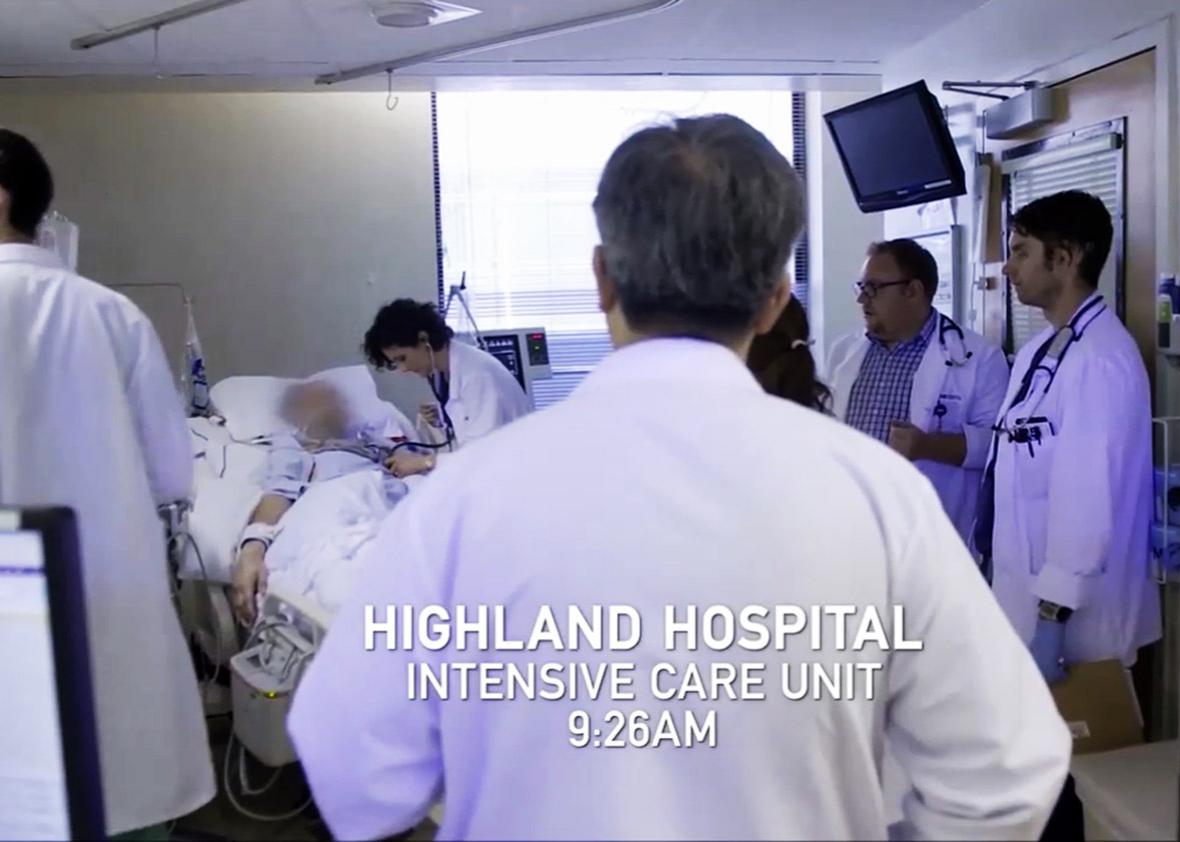Documentaries often deal in sadness and Netflix’s new short Extremis is no exception. A film on end-of-life care that is shot entirely in an Intensive Care Unit at Highland Hospital in Oakland, California, the piece centers on Dr. Jessica Zitter, a palliative care specialist who leads a team in helping terminal patients prepare to die. Zitter treats or oversees patients who have no hope of recovery—for example there’s Selena, who stopped breathing on the way to the ER and suffered severe brain damage, and Donna, a woman with severe myotonic muscular dystrophy that has severely compromised her existence. Her family is tormented with the knowledge that the breathing tube is likely all that’s keeping her alive. A third patient is a woman on a respirator who is unsuccessfully trying to write her intentions on paper. Many of these patients are chained to supportive equipment with no hope to ever get off.
The main tension in the film is Zitter’s efforts to help guide her patients and their families toward the ultimate realization that there is often no realistic chance of recovery. She comes across as compassionate and supportive if rational to the point of dogma. There are disturbing points in the film where families such as Selena’s try to resist, clinging to a sliver of hope, which Zitter cuts through with reasoning and calm resolve. In this way, the documentary highlights the main tension of end-of-life care: Doctors often have different priorities than the patients and family members they’re treating. That’s because doctors are often able to see the stark reality of a situation before the patients and family can. “I’m always looking for another miracle,” Selena’s daughter Tama says, adding that pulling her mother’s tube “feels like murder.”
Extremis runs just 24 minutes, but the film still manages to address several difficult questions about who ought to make the decisions of when it’s time to stop treatment: Can a patient who is severely ill make a clear decision about when and if to withdraw care? At what point should family members (or surrogates) take over decision-making from a patient? What is the role of a person’s faith even when the science seems irrefutable?
While treating Donna, the deteriorating patient with myotonic dystrophy, another doctor asks Zitter if it would be possible to call in a super specialist on this disorder before “telling the family there’s zero hope when there might be” or turning off the equipment. Zitter doesn’t answer, instead changing the subject back to a discussion about the patient having told her brothers she didn’t want to be on a machine. This family is also much more prepared to let go then Selena’s. This interaction between the two doctors underlines Zitter’s single-minded focus. She is convinced that the patient is beyond hope medically, and she knows that expending additional resources will not change the situation. Still, the idea to make sure all experts and possibilities are considered before giving up is appealing.
The finality of death is the backdrop that drives the drama throughout the documentary. Patients’ and families’ convictions that this may not be the end are driven by different things—faith or love or belief in medicine—but all are reluctant to let go. This understandable perspective is also very common and realistic in an ICU, and viewers will likely relate to this discomfort.
What is less expected, perhaps, is how certain Zitter seems to be in her view of each case. It isn’t really that she is helping patients or families decide between two options. Instead, she is the expert in when to withdraw care, and it is clear she sees her job as compelling the patient or his or her family to comply. Many critical care or palliative care physicians are very opinionated as to the where and when of death, in my experience, but no matter how frequently I see it, it doesn’t make me completely comfortable with the approach.
This documentary is a view into the daily dilemmas that occur in an ICU as doctors, patients, and families face the inevitability of death, though they realize it at different time. It’s a fascinating conversation to watch, as any viewers will inevitably realize that they’ll face the same conversations themselves at some point. Nothing can truly prepare anyone for that, but this documentary is a good place to start the conversation.
